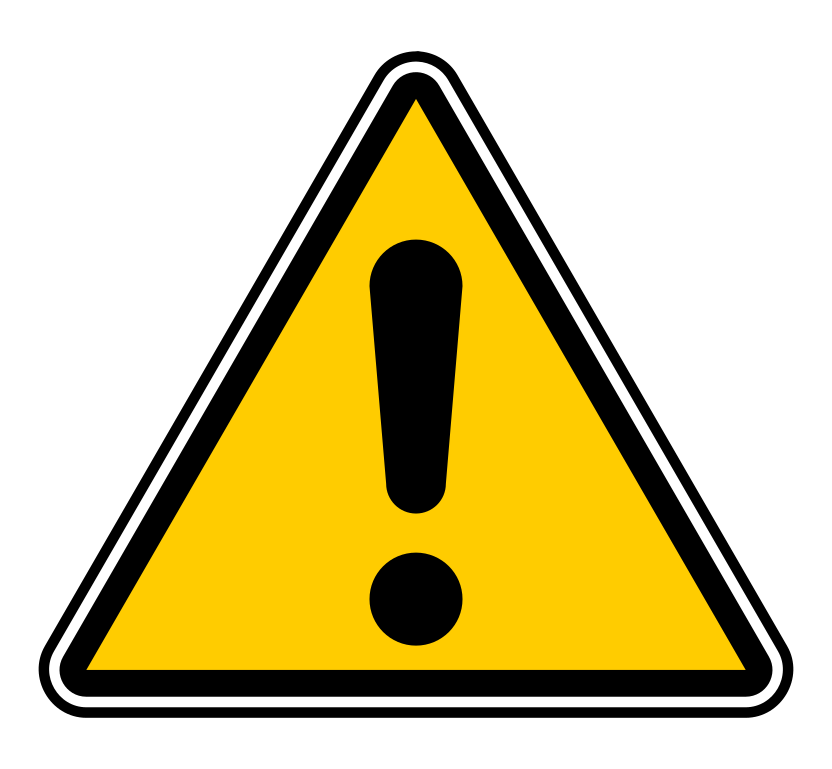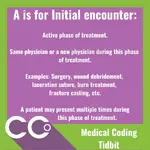Many codes in Chapter 19 of ICD-10-CM (Injury, Poisoning, and Certain Other Consequences of External Causes (S00-T88)) require a 7th character to identify the episode of care. With the exception of the fracture codes, most Chapter 19 codes have three 7th character values.
An initial encounter (character “A”) describes an episode of care during which the patient is receiving active treatment for the condition. Examples of active treatment are: surgical treatment, emergency department encounter, and evaluation and continuing treatment by the same or a different physician.
Although it’s counter-intuitive, “initial encounter” does not necessarily mean “initial visit.” A patient may receive active treatment for a condition beyond the initial visit. The ICD-10-CM Chapter 19 Guidelines confirm: “While the patient may be seen by a new or different provider over the course of treatment for an injury, assignment of the 7th character is based on whether the patient is undergoing active treatment and not whether the provider is seeing the patient for the first time” (emphasis added).
Assuming the provider is providing active care, a seventh character of “A” is appropriate, regardless of how many times the provider saw the patient previously.
Initial Encounter:
• 7th character “A”, initial encounter is used while the patient is receiving active treatment for the condition. Examples of active treatment are: surgical treatment, emergency department encounter, and evaluation and continuing treatment by the same or a different physician.
• For complication codes, active treatment refers to treatment for the condition described by the code, even though it may be related to an earlier precipitating problem.
• Traumatic fractures are coded using the appropriate 7th character for initial encounter (A, B, C) while the patient is receiving active treatment for the fracture.
• The appropriate 7th character for initial encounter should also be assigned for a patient who delayed seeking treatment for the fracture or nonunion.

Coding Injuries in ICD-10-CM
An initial encounter (character “A”) describes an episode of care during which the patient is receiving active treatment for the condition. Examples of active treatment are: surgical treatment, emergency department encounter, and evaluation and continuing treatment by the same or a different physician.
Although it’s counter-intuitive, “initial encounter” does not necessarily mean “initial visit.” A patient may receive active treatment for a condition beyond the initial visit. The ICD-10-CM Chapter 19 Guidelines confirm: “While the patient may be seen by a new or different provider over the course of treatment for an injury, assignment of the 7th character is based on whether the patient is undergoing active treatment and not whether the provider is seeing the patient for the first time” (emphasis added).
Assuming the provider is providing active care, a seventh character of “A” is appropriate, regardless of how many times the provider saw the patient previously.
Initial Encounter:
• 7th character “A”, initial encounter is used while the patient is receiving active treatment for the condition. Examples of active treatment are: surgical treatment, emergency department encounter, and evaluation and continuing treatment by the same or a different physician.
• For complication codes, active treatment refers to treatment for the condition described by the code, even though it may be related to an earlier precipitating problem.
• Traumatic fractures are coded using the appropriate 7th character for initial encounter (A, B, C) while the patient is receiving active treatment for the fracture.
• The appropriate 7th character for initial encounter should also be assigned for a patient who delayed seeking treatment for the fracture or nonunion.
Coding Corner: “Initial” vs. “subsequent” vs. “sequela” in ICD-10-CM coding
CPR’s “Coding Corner” focuses on coding, compliance and documentation issues relating specifically to physician billing. This month’s tip comes from G. John Verhovshek, the managing editor for AAPC...
www.cmadocs.org



